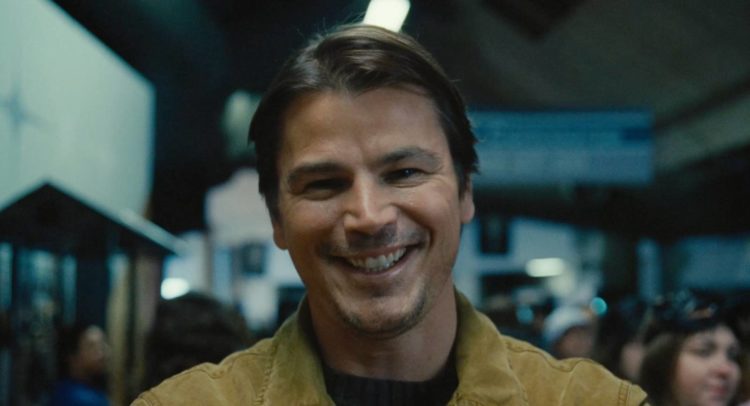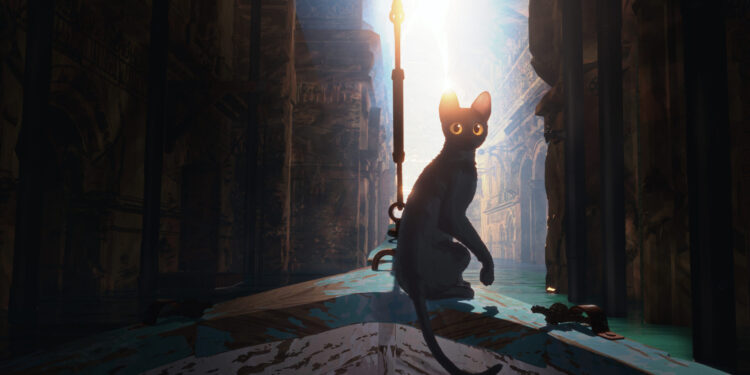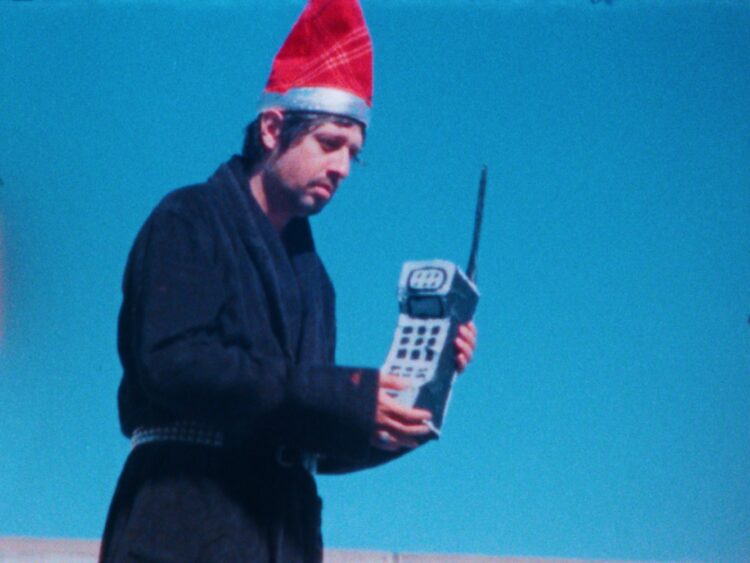

Likely the burden of precedent never lifts from M. Night Shyamalan, whose name became noun, adjective, and verb more-or-less the moment The Sixth Sense landed with shockwaves a quarter-century ago. As certain narratives about his career (twist endings, Newsweek covers) waned, others emerged: a has-been for whom more than one obituary was penned with delight; a gradual return through better-than-expected genre fare; now a full-blown second act as the rare, maybe-single-digit American filmmaker producing original material (basically) geared towards adult sensibilities. And still explaining to friends my being especially excited for Trap has yielded questions, perplexed looks, slight disdain. (I’m hardly so efficient at summarizing plots as a studio-cut trailer.) If “the beach that makes you old” was the perfect film-as-meme to reintroduce us to cinemas post-COVID, whatever strange powers were offered by the work itself fell on fewer ears and sparser attentions.
Far be it from me to say Shyamalan needs further reclamation or defense––I might instead point you to the most deranged, overcompensating discourse ever waged on behalf of a director––except to argue Trap’s legion pleasures aren’t disconnected from the satisfaction of watching his specific talents meet a distinctly entertaining premise. And if not quite some turning point in Shyamalan’s oeuvre, watching it suggests a coinciding fulfillment of his earlier cultural dominance with the thoroughgoing security established since The Visit defibrillated his career nearly a decade ago. Even at a pace or two too long, while starting to coast on the pure rush of initial, stronger ideas, it’s perhaps his best-engineered work since The Village and arguably the purest piece of entertainment he’s ever made.
There is a wheat-from-chaff separation we might make between filmmakers who conjure scares and those who understand fear––as source and response, as narrative tool and character development. That knowledge stands among Shyamalan’s greater strengths, the clear distinction from fright-first, everything-second approaches often bestowed upon likewise material: recall how long it takes us to see a ghost in The Sixth Sense or an alien in Signs; to grasp the ramifications in Unbreakable and Old; what knowledge of evil is obscured in The Village, The Visit, or The Happening (a film, cards on the table, I understand less than any in the medium’s history). By these tokens Trap marks a neat experiment for Shyamalan, a reversal of dynamics, as perhaps the first of his films to almost wholly center itself with its source of fear: Cooper, known to the world as “The Butcher,” a serial killer who discovers the concert (centered on a pop sensation played by the director’s own daughter, Saleka Shyamalan) to which he’s taken his daughter is a trap to ensnare him. Where an earlier Shyamalan film would wring suspense from knowing a dangerous force is locked in the room with us, Trap puts us in the force’s shoes and sees the room through his eyes. The writer-director’s characteristic empathy comes only in dribs and drabs; instead everyone stands under a sword of Damocles from the moment we see them, written and played and (in Demme-esque camera addresses) photographed at this odd-comic register birthed from knowledge of their ignorance. Shyamalan, almost needless to say, has more than a bit of fun with these opportunities.
Hard-edged, cold-toned, unnervingly funny, Trap couches emotional detail in its return-of-sorts for Josh Hartnett, an actor onto whom nearly anybody born between 1980 and 1995 can project endearing memories. Such are the associations he and Shyamalan twist like a corkscrew: his genial good looks playing a credible mask, his characteristically stiff onscreen comportment enlivening this character’s sociopathy and nefarious masterminding, and Hartnett folding a Shake Shack napkin as assuredly as Cooper plunges his thumbs into a victim’s eyes. More than any precise camera set-up or (in a premier effect courtesy of DP Sayombhu Mukdeeprom) elaborate lighting scheme emanating from the concert stage, Shyamalan seems to have the most fun forcing us into Cooper’s POV at every moment and making a structuralist game from any of his myriad walks through the venue––every room a new piece of cleverly doled exposition, each spring-loaded interaction and close call a new opportunity to increase volume until the next scenario only ratchets proceedings higher, higher, higher still.
There’s an inevitable capacity for Trap‘s stakes and tensions. The unfortunate precedent is Shyamalan’s recent films suggesting a storyteller who forgot his ending mid-tale, their climactic scenes insinuating an improvisation that tries (but fails) to bear resonance with what’s come before. Trap’s first two-thirds are so potent a source of pleasure that the risk of derailing is its own cat-and-mouse game between creator and viewer. And towards second act’s end comes the POV switch––a sequence hinging upon quick decisions fulfilled by a small collection of shots––that climaxes, largely and brilliantly, through off-screen action and muffled sound; and where this pivot engenders admiration for its audacity and success, the ensuing time does more to restate potential than fulfill it, coasting on a high instead of continually innovating.
But great artists know how to make transactions, to persuade us each choice is in service of their broader vision, and as Shyamalan gambles his climactic sequence on a revelation so absurd that even in-the-moment excitement can’t bulwark such implausibility, this narrative choice also services a 100-minute trend of unpredictability. Thus the coda: what would nearly always be leaving the door slightly ajar for a sequel, or at least prove a canny “gotcha” moment, plays less certain. It feels as though Trap will simply keep running and Shyamalan’s ended our time in a split-second decision.
Whether Hartnett’s Cooper is a new fixation à la Mr. Glass or he’s simply offering a cheeky wink-nod or (as some overburdened Letterboxd review will inevitably insist) he wants to suggest cycles of violence, these final moments are a nifty means (however intentional) to justify slight distension. Were it not so, Trap’s initial powers, still, could hardly diminish. They’re at least enough not to earn askance glances when M. Night Shyamalan’s next film arrives.
Trap is now in theaters.
The post Trap Review: M. Night Shyamalan’s Best-Engineered Work Since The Village first appeared on The Film Stage.



